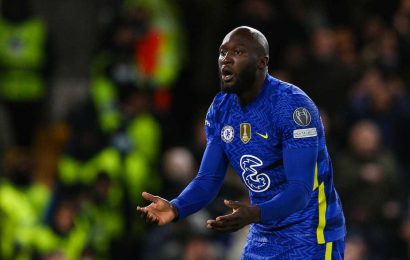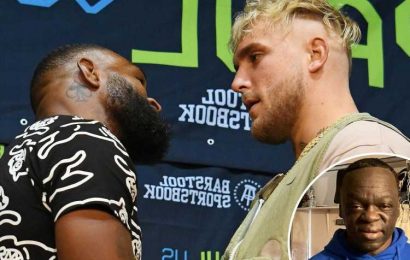More from:
Larry Brooks
Rangers need to give Vitali Kravtsov major role upon his return
Rangers have to test Igor Shesterkin’s limits after injury return
NHL keeps looking the other way on dangerous play
David Quinn's shocking Mika Zibanejad benching may echo with Rangers
Things haven't gone according to plan for Rangers, Devils
Spare me the nostalgia over a theme song that probably not one of the big-money folks over at ESPN, who have spent years on air without mentioning the NHL, could identify even if LeBron James and Tom Brady were humming it.
Don’t preach to me about how much the NHL will benefit from the exposure of having its games televised on one or another of Disney’s platforms, streaming or otherwise. Here’s what I have always wanted to know: What would possess a grown-up outside of Bristol, Conn., to ever refer to a television network as “the mothership” or “the worldwide leader?”
There is one thing and one thing alone of importance attached to the NHL’s media-rights deal with Disney, ESPN and their affiliated brands that include the Hulu streaming service, and that is the money.
This is Slap Shots’ Rod Tidwell moment: Show me the money and tell me how quickly its introduction into league revenue will be able to erase the NHL Players’ Association’s escrow debt that threatens to strangle the league beyond the expiration of the current collective bargaining agreement.
That’s all that counts.
The salary cap, according to the agreement forged last summer, cannot rise more than $1 million per season until the escrow debt is paid off. Beyond that, if a certain amount of escrow debt remains on the ledger in 2024-25, the sides would have to come up with a formula under which the PA would pay back the league in full following the 2025-26 expiration of the CBA. Won’t that be fun? Kids who are currently age 13 and playing Bantam hockey would wind up paying for this.
The deal with ESPN is believed to be worth approximately $420 million per year. A secondary package yet to be negotiated or completed with a second media-rights partner is expected to account for approximately $200M per. That obviously represents a substantial increase over the $200M per total the NHL is receiving under its current agreement with the NBC networks, but probably is not the grand slam home run — OK, natural hat trick — the league might have envisioned before the pandemic struck.
The escrow debt at the end of this season is likely to be around $900M. If the players simply return their half of the incoming TV money, that’s what, around $310M per? So it would take three years of media rights cash to offset the current debt.
Except the debt will almost certainly grow due to annual payroll escrow overage. There is still no telling about what next season’s protocols might entail and whether full houses will be permitted across the league. But even if league revenues rebound to the $5 billion mark that was projected for a completed 2019-20, escrow withholdings were at 14 percent.
After next season’s escrow will be capped at between 16 and 18 percent, it will be capped at 10 percent in 2022-23 and at six percent the following three years of the agreement. So, unless the NHL generates additional revenue-producing initiatives, there will be spillage each season, and where and when it will stop, nobody quite knows.
Maybe the NHL will flourish with exposure on ESPN, maybe the network will direct other properties onto its Plus-streaming site and hockey will reap additional benefits from that. But this deal was all about the money. The NHL will only be indebted to ESPN if this deal is able to cover the PA debt.
Not so much this season, when it all has all gone wrong in Buffalo, but even when Taylor Hall was having his Hart Trophy season in New Jersey 14 years ago (What’s that? It was just three years ago?), there were folks all over the league talking about how the winger was a “me” guy in a “we” sport.
So would the Islanders, the Ultimate We Team run by the Ultimate We Guys, Lou Lamoriello and Barry Trotz, dare attempt to bring Hall into the mix as a rental at the trade deadline if the injury to Anders Lee is as serious as might appear?
Here is the rule about Lamoriello: There are no rules.
When you think you know what he is going to do, you don’t.
Truth be told, ESPN does include a cadre of professionals who surely will treat hockey with loving care, though it is inevitable the network will do its best to dumb down the sport, as it does so regularly with most of its other properties.
If there is a petition out there needing signatures to get Gary Thorne onto next season’s roster of play-by-play people, you can just add mine electronically right this moment.
Snapshot, just about halfway home. Elite Eight: 1. Islanders; 2. Tampa Bay; 3. Toronto; 4. Carolina; 5. Vegas; 6. Washington; 7. Florida; 8. Pittsburgh.
Midseason, Biggest Disappointments: 1. Dallas; 2. Colorado; 3. Columbus; 4. Nashville.
Midseason, Biggest Surprises: 1. Chicago; 2. Winnipeg; 3. Los Angeles; 4. Florida.
Who wants to bet that the seven-game suspension levied against Tom Wilson for his cheap-shot that concussed Brandon Carlo came courtesy of a Sixth Avenue as exasperated as the rest of us by the Department of Player Safety’s penchant for combing the fine print to allow recidivist headhunters to go scot-free?
You realize, don’t you, that through Friday’s games, seven of the NHL’s top 13 goal-scorers were born in the USA, with three hailing from Canada?
Who had 36-year-old Dustin Brown tied for seventh in the league in goal-scoring, with 13 through Friday?
Better question: Who, even a couple of seasons ago, had Brown still on the Kings at age 36?
In the league, maybe?
Is there more separation between 2015’s first-and-second overalls, Connor McDavid and Jack Eichel, or between 2016’s Auston Matthews and Patrik Laine?
Finally, this Quick Quiz: Is Laine the new age Marian Gaborik?
Answers will be graded by visiting professor John Tortorella, who very likely will fail to be given tenure following the semester.
Share this article:
Source: Read Full Article








